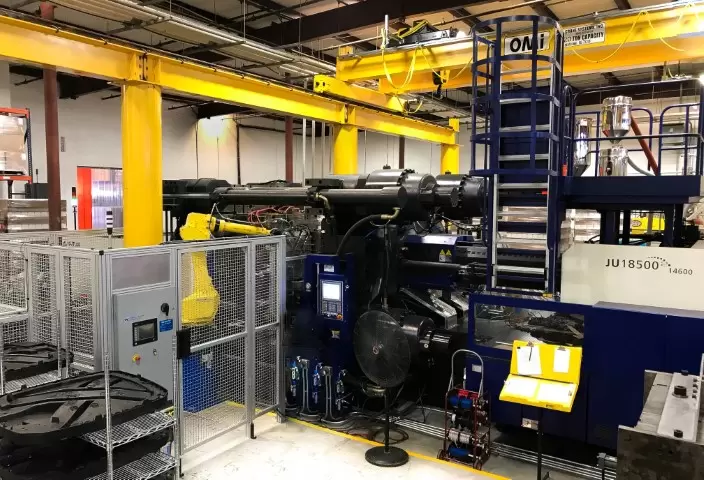Table of Contents:
- Introduction
- Injection Molding Processes
- Materials Used in Injection Molding
- Advantages of Injection Molding Services
- Choosing the Right Injection Molding Service Provider
- Conclusion
-
1.Introduction
Injection molding is a manufacturing process that is widely used to create plastic parts and products for a variety of industries. Injection molding services offer a range of capabilities, including large-scale production, precise and repeatable quality control, and the ability to use a wide variety of materials.
In this comprehensive guide, we’ll explore the various processes used in injection molding, the materials available for use, the advantages of injection molding services, and the applications for which they are best suited. We’ll also discuss how to choose the right injection molding service provider for your specific needs.
-
2.Injection Molding Processes
There are several injection molding processes, each with its own unique benefits and applications. Here are some of the most common:
- Conventional Injection Molding: This is the most widely used injection molding process. It involves melting plastic pellets and injecting them into a mold, where they cool and solidify into the desired shape.
- Insert Molding: In this process, metal or plastic inserts are placed into the mold before injection. The plastic then surrounds and bonds to the inserts, creating a stronger part.
- Overmolding: Overmolding involves molding one material over another, creating a part with multiple layers or colors.
- Micro-Molding: This process is used to create small, intricate parts that require high precision and accuracy.
- Gas-Assisted Injection Molding: This process involves injecting gas into the mold, which helps to reduce the amount of plastic used and improve part quality.
- Liquid Silicone Injection Molding: This process involves using a liquid silicone material to create parts with high precision and accuracy.
-
3.Materials Used in Injection Molding
Injection molding services offer a wide range of materials for use in the manufacturing process. Here are some of the most common:
- Thermoplastics: These materials can be melted and solidified repeatedly without losing their properties. They are used in a wide range of applications, including automotive, aerospace, medical, and consumer goods.
- Thermosetting Plastics: These materials are cured through a chemical reaction, which makes them strong and durable. They are used in high-stress applications, such as electrical components.
- Elastomers: These materials have high elasticity and flexibility, making them ideal for applications that require stretch and durability, such as medical devices.
-
4.Advantages of Injection Molding Services
Injection molding services offer numerous benefits, including:
- Cost-Effective: Injection molding is a cost-effective way to produce large quantities of high-quality parts and products.
- High Efficiency and Precision: Injection molding machines can produce parts quickly and with high precision, ensuring consistent quality.
- Large-Scale Production: Injection molding is ideal for large-scale production runs, as it can produce thousands or even millions of parts quickly and efficiently.
- Wide Range of Applications: Injection molding can be used to produce parts and products for a wide range of industries, including automotive, aerospace, medical, and consumer goods.
-
5.Choosing the Right Injection Molding Service Provider
When it comes to choosing an injection molding service provider, there are several factors to consider. Here are some key factors to help you make an informed decision:
- A. Experience and Expertise: Look for a service provider with years of experience and a proven track record in injection molding. Check their portfolio to see if they have worked on projects similar to yours. Also, consider their expertise in areas such as design, prototyping, and production.
- B. Equipment and Technology: The quality and efficiency of the injection molding process largely depend on the equipment and technology used. Choose a service provider that has state-of-the-art equipment and employs advanced technologies such as computer-aided design (CAD), computer-aided manufacturing (CAM), and computer numerical control (CNC) machines.
- C. Quality Control and Assurance: Quality is a critical factor in injection molding. Choose a service provider that has a robust quality control and assurance process in place. Look for certifications such as ISO 9001, which indicates that the service provider meets international standards for quality management.
- D. Customer Service and Support: Choose a service provider that values customer satisfaction and provides excellent customer service and support. Look for a provider that is responsive, communicative, and flexible in accommodating your needs.
By considering these factors, you can choose the right injection molding service provider that can meet your requirements and deliver high-quality parts and products.
If you need about Plastic Injection Molding Services,You can click on the V1 Prototype website to find it:16 Years Foucus On Plastic Injection Mold Manufacturing, Molding Products Mainly In Automotive, Electronics, Appliance, Medical, Housewares Industries.
-
6.Conclusion
Injection molding services are essential in the manufacturing industry, providing a cost-effective and efficient way to produce high-quality plastic parts and products. The process involves injecting molten plastic into a mold cavity, which then solidifies into the desired shape.
In this article, we discussed the definition and process of injection molding, as well as the various types of machines and their components. We also explored the advantages and disadvantages of injection molding, as well as the applications and future of this technology.
Lastly, we provided tips for choosing the right injection molding service provider, emphasizing the importance of experience, equipment and technology, quality control and assurance, and customer service and support.
With these insights and considerations, you can make informed decisions about injection molding and choose the right service provider to meet your specific needs and requirements.




